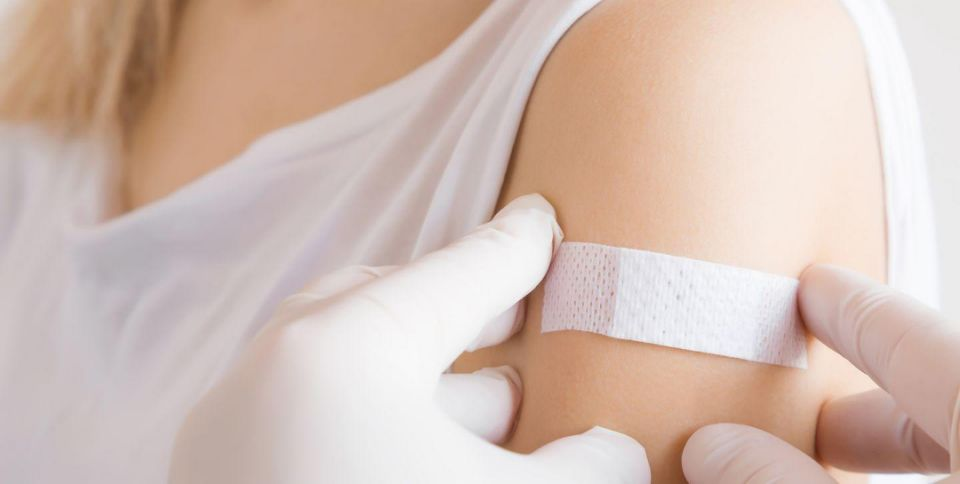
Experts Explain What ‘COVID Arm’ Is and How to Treat It
Share0COVID Arm is a term coined by experts to describe a delayed itchy rash or dull pain at the injection site after you’ve received a COVID-19 vaccine.
Currently, the trend is clearly linked to Moderna mRNA vaccines, and research suggests that the rash or pain may appear over a full week after your first shot.
This side effect is usually harmless and can be managed at home, and doctors say it shouldn’t deter you from receiving a second dose.
If you’ve received a dose of the vaccine and can’t shake a sense of dull pain over time, you aren’t alone. Officials at the Centers for Disease Control and Prevention have long stipulated that arm pain and swelling or redness is an expected side effect for any vaccine, among other temporary symptoms. But some people are experiencing a more noticeable reaction at the injection site that’s now being referred to as “COVID arm” by experts and researchers alike. While anyone can usually experience pain or swelling in their upper arm after their injection, COVID arm usually refers to symptoms that occur long after your first shot — in some cases, up to a week afterward.
Early research published in the New England Journal of Medicine suggests that redness, swelling, tenderness, or even a skin rash can occur 8 or more days after receiving a shot — in this case, specifically Moderna’s mRNA vaccine. Using data from a phase 3 clinical trial conducted in 2020, researchers suggest that these reactions faded on their own within four or five days after being first reported.
You may be wondering if you have COVID arm even if you didn’t get a Moderna vaccine, and that’s valid since both Pfizer and Moderna (as well as the recently released Johnson & Johnson shot) are known to cause minor temporary discomfort. Researchers looking into the side effect for Moderna specifically noted that 84% of individuals in earlier trials experienced arm pain within hours or in the first day or two of being injected. But more rarely, and potentially more concerningly for those affected, a few individuals — less than 1% of those involved in early trials — developed a raised, itchy rash, that may even appear as a legion in some cases. More people are reporting this to officials now as Moderna vaccines are being distributed throughout the spring.
Delayed cutaneous reactions developed in 12 patients, days after initial injection-related symptoms resolved. The reactions, some as severe as grade 3, resolved in a few days with local therapy, and all 12 patients received the second #COVID19 vaccination. #IDTwitter
— NEJM (@NEJM) March 3, 2021
The good news? It’s a harmless, brief response, and shouldn’t be considered a severe reaction, says Joseph Mosquera, M.D., a RxSaver Medical Expert based in New Jersey. “It is a localized, slow reaction that’s known as delayed t-cell hypersensitivity, which I see not only in Moderna recipients but in all three vaccines presently available,” he explains. “[The reaction] is part of our natural immunity, which migrates to sites in our body when they react to the vaccines as a foreign invader.”
In the limited NEMJ study, more than 240 people reported first experiencing COVID arm symptoms around day eight or nine post-vaccine, with itchy red skin and swelling being a primary concern. Only half of these same people experienced the same side effect after a second dose, which suggests that others may only experience COVID arm after your first shot. Also, early data suggests that women may be more likely to experience general vaccine side effects (like COVID arm) compared to men, as reported by the New York Times.
How to treat COVID arm symptoms:
If you expect you’re dealing with COVID arm, whether that’s a dull pain within the first few days of vaccination or an itchy rash up to a week after your first injection, there are a few things you can do at home. If you don’t have any prior medical conditions that would prevent you from doing so, take ibuprofen or acetaminophen to quell arm pain and antihistamines to reduce itchiness or discomfort on any rashes, per CDC advice. You can also apply ice to your arm if it’s swollen, Dr. Mosquera advises, and an over-the-counter steroid cream for any persistent itching or rash.
You shouldn’t, however, resort to antibiotics for swelling, pain or rashes at your injection site — infections are extremely rare, Dr. Mosquera adds, and you’re likely putting yourself in an even worse position. Most COVID arm symptoms are resolved within 1 week, 2 weeks at most for certain individuals, he explains.
Discussing any side effects of the vaccine with your doctor is a great idea, especially if you have a history of allergies. If you are having trouble breathing, a high fever, body aches and fatigue alongside COVID arm conditions, you should speak with a healthcare provider immediately. You may also use the CDC’s VAERS system to report any side effects after your vaccination, as it logs a record that may prompt a follow-up for you if necessary.
One thing is clear: COVID arm shouldn’t discourage you from receiving your second dose of the vaccine. It’s unclear why delayed rashes haven’t largely been associated with Pfizer vaccines at this point, but national health officials, as well as researchers behind early data on the topic, are pushing individuals to receive a second dose. “When patients who have experienced COVID arm receive the second dose, I advise them to get the ‘jab’ in the opposite arm,” Dr. Mosquera adds. “COVID arm isn’t usually a reason that anyone should consider skipping their second dose.”
